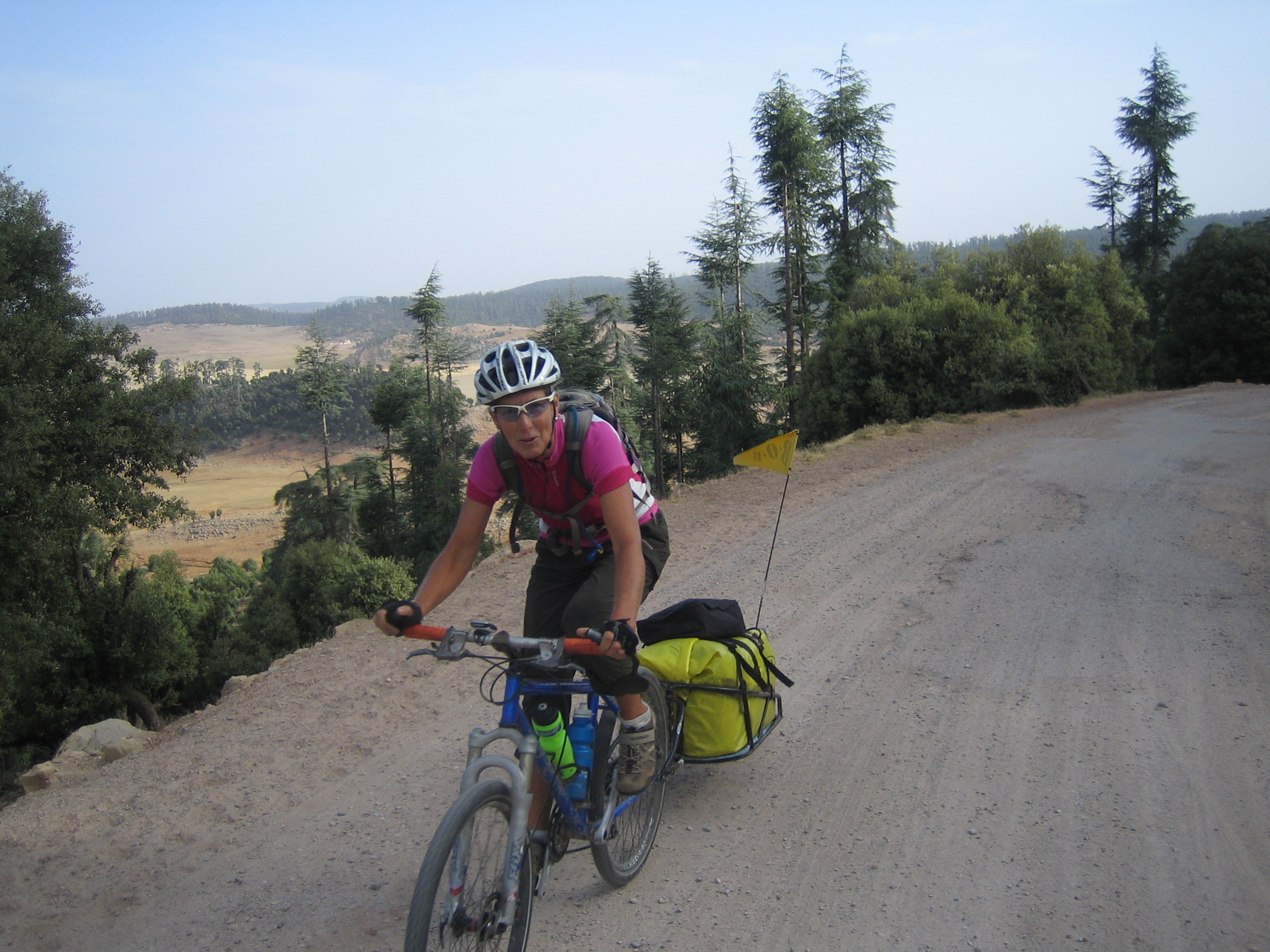Blog 3 More on Morocco
Leaving Chefchaouen we set our sights on the cedar forests and cool streams of the Middle Atlas mountains. Firstly we visited the village of Moulay Idriss, where we were befriended by Aziz – who greeted us like long-lost friends and produced an amazing chicken tajine from a tiny gas cooker in his teleboutique/kiosk/cafe. Thus fortified we visited the Roman ruins at nearby Volubilis just on dusk, and pondered on the fact that people have been running around these parts for a very long time. Judging by the bathhouses the Romans certainly knew how to have a good scrub and soak in comfort.
The ski resort town of Ifrane was a pristine alpine legoland of identical Swiss chalet-style housing, home to Morocco’s most elite university, which may explain the complete absence of donkeys and the usual debris. A little further down the road we found a small friendly campground presided over by a delightful Berber gentleman – Hassan. It was a little difficult to leave this shady oasis, but eventually we motivated ourselves to head off into the mountains. The road via the village of Ain Leuh was fantastic – just a narrow rough strip of bitumen winding ever upwards, through dense cedar and cypress forest. After a long day we arrived at Lac Azegza to find that half of Morocco had beaten us to it. It was a moth-eaten version of Easter holiday crowds camped on the Murray River. We carved out a spot, and were warned to watch out for the evening onslaught by the local population of Barbary apes.
The next couple of days we spent exploring on tracks that wound up and down, past tiny Berber villages, lakes, streams, and forests. It was great riding, but we were pretty toasted by the time we popped back out on a main road near Midelt. Our arrival here coincided with a bout of Allah’s Revenge (dodgy tajine, maybe?) and thus the need for a good lie down.
We then turned round, and made our way back to the north, stopping off in Meknes. Our previous climbing efforts were rewarded with some high speed descents as we headed to the Atlantic coast, along with the other half of the population of Morocco. Finally we arrived in Tangier, which we really enjoyed despite its reputation as a seedy port city. Leaving Tangier was very difficult, as gale force winds closed the city port, and twice forced us to turn back when we couldn’t hold our bikes upright, much less propel them in a forward direction. Finally we made the ferry across to Spain and now turn our backs to the African continent as we pedal north-west towards Portugal.
Morocco Album 2
Morocco Album 3










































